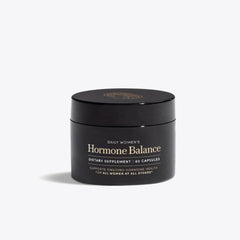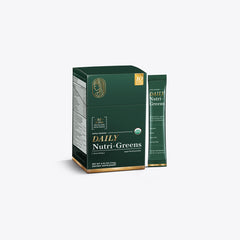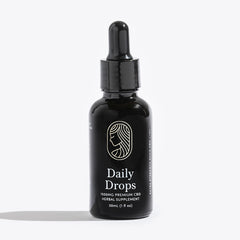Our hormones can dictate everything from our moods to our metabolism – they are like microscopic messengers that wield incredible influence throughout the many seasons of our lives. In this article, we will discuss four key hormones: estrogen, progesterone, testosterone, and dehydroepiandrosterone (DHEA), while also reviewing potential reasons why someone would want to get their levels tested. We will also discuss nutrition and exercise as it relates to our hormones and what causes hormones to be out of balance. Let’s dive into the science of hormones!
Estrogen
Estrogen is primarily responsible for the development of the female reproductive system, with the main source coming from the ovaries (men produce estrogen as well, but in much smaller amounts). <1> Below are some of the roles estrogen plays in the body:

- Estrogen is one of the hormones that regulate the menstrual cycle by stimulating the thickening of the uterine lining during the first half of the menstrual cycle, also known as the follicular phase. <1>
- We can also thank estrogen for breast development, widening hips, and changes in fat distribution in the female body. <1>
- Estrogen helps maintain bone density and has a protective effect on the cardiovascular system. <1>
Testing Estrogen Levels
Checking estrogen levels may be appropriate when women have menstrual cycle irregularities such as heavy bleeding or missed periods. Likewise, for women entering menopause, knowing their levels can confirm menopausal status and guide hormone replacement therapy (HRT) decisions such as monitoring appropriate dosages and minimizing risks of therapy.
Progesterone
Like estrogen, progesterone is also found in both males and females, however its primary role is in regulating the menstrual cycle and supporting pregnancy. <2> Below are the roles of progesterone in the body:
- After ovulation, progesterone prepares and maintains the uterine lining (endometrium) for possible implantation of a fertilized egg. <2>
- Progesterone has a calming effect on the nervous system, and low progesterone levels such as during menopause can lead to feelings of anxiousness, irritability, and sleeplessness. <2>
Testing Progesterone Levels
 Just like with estrogen, menstrual cycle irregularities such as spotting may raise a flag that progesterone levels need to be checked. Testing progesterone levels may be important to evaluate whether a woman is ovulating and producing sufficient progesterone for a successful pregnancy. Additionally, testing may be required for women receiving HRT to ensure appropriate hormonal balance.
Just like with estrogen, menstrual cycle irregularities such as spotting may raise a flag that progesterone levels need to be checked. Testing progesterone levels may be important to evaluate whether a woman is ovulating and producing sufficient progesterone for a successful pregnancy. Additionally, testing may be required for women receiving HRT to ensure appropriate hormonal balance.
Dehydroepiandrosterone (DHEA)
DHEA is a steroid hormone produced by the adrenal glands, which are located on top of each kidney. <3> DHEA is a prohormone, or precursor, to both testosterone and estrogen, and it plays various roles in the body as seen below:
- DHEA has been investigated for its potential role in supporting reproductive health. <4>
- It may play a role in maintaining energy levels, immune function, and overall well-being. Low levels may be associated with symptoms such as fatigue, low mood, and decreased motivation.<5>
Testing DHEA Levels
Getting DHEA checked levels may be appropriate for women undergoing fertility treatment, especially if they have diminished ovarian reserve. Supplementing DHEA under the guidance of a doctor has the potential to improve ovarian function. <4> Since DHEA is a precursor to testosterone, it may be relevant to get levels checked in those dealing with excessive hair growth or other high testosterone symptoms.
Testosterone
Testosterone is often considered a male sex hormone, because it stimulates the development of male reproductive tissues and secondary sexual characteristics like facial hair and deepening of the voice. However, it also plays important roles in females (albeit at lower levels than in males!) <6> Here are some key functions of testosterone in females:
- Adequate levels of testosterone are important for preventing muscle and bone loss and reducing the risk of osteoporosis. <6>
- Testosterone may influence metabolism and energy levels. Low levels in females have been associated with changes in body composition and decreased energy. <6>
Testing Testosterone Levels
Those dealing with low sex drive may want to get their testosterone levels checked as low levels may contribute to low libido and sexual function. Likewise, irregular or absent menstrual cycles may be cause for getting levels checked. Testing testosterone levels may also be a part of the diagnostic process for polycystic ovarian syndrome (PCOS); a common condition associated with high testosterone levels.
Nutrition and Hormones
 Nutrition plays a crucial and complex role in our overall endocrine function. Various dietary components can impact hormone production, metabolism, and balance. Lets dive into some key topics regarding nutrition and hormonal balance!
Nutrition plays a crucial and complex role in our overall endocrine function. Various dietary components can impact hormone production, metabolism, and balance. Lets dive into some key topics regarding nutrition and hormonal balance!
Fiber and elimination for the win!
Believe it or not, our gut microbiomes and healthy bowel movements can help to clear excess hormones from the body. In fact, the gut is one of the main regulators of circulating estrogen in the body! Feeding our gut microbes fiber from fruits, vegetables, and beans can help move excess hormones and toxins through our digestive tracts. <7>
Cruciferous vegetables: underdogs or superheroes?
Veggies like cauliflower, broccoli, and cabbage may not be top favorites for many people, however they are often recommended as a natural way to promote hormonal balance! Compounds in these veggies can help to break down and metabolize estrogen so that it doesn’t get stuck recirculating in the body, causing hormonal imbalances. <8>
Flax: to eat or not to eat?
A topic of much debate when it comes to our hormones and nutrition is phytoestrogen-containing foods like flaxseeds. Phytoestrogens contain a weak form of estrogen and can bind to receptor sites usually taken up by stronger estrogens, and flax can both increase or decrease estrogen levels depending on the circumstance! <9> Consuming flax is safe and healthy for most people, however if you are dealing with hormonal imbalances you should seek the advice of a healthcare professional before making it a part of your daily diet.
 Healthy fats: focus on Omega-3
Healthy fats: focus on Omega-3
Essential fatty acids, such as omega-3 and omega-6, play roles in the synthesis of hormones involved in inflammation and immune response. Omega-3-rich foods include salmon, sardines, flaxseeds, and chia seeds.
Fermented food: diversity is the name of the game
Including a diet rich in fermented and probiotic foods will help your gut microbiome function smoothly, as certain probiotics help break down excess estrogen and may even reduce the risk of breast cancer. <10>
The Fight for Hormonal Balance
Hormonal imbalances can result from various factors, and achieving better hormonal regulation involves addressing these underlying causes. Let’s break down what causes hormones to be out of balance in more detail as well as some strategies to promote more balance below:
Endocrine disruptors mimic estrogen in the body
One of the most widespread offenders is bisphenol-A (BPA), which is used in food containers, plastic bottles, and receipt paper. Some studies suggest that BPA has been linked to some hormonal-related cancers. <11> While it may be impossible to avoid all endocrine disruptors you can make healthier choices by using glass instead of plastic, avoiding artificial fragrances, choosing organic foods, and filtering your water.
Stress impacts hormones
Chronic stress can disrupt the normal functioning of the hypothalamus-pituitary-adrenal (HPA) axis, affecting the balance of our hormones. <12> Now might be a good time to take a walk, meditate, or indulge in a warm bath!
Say no to excess sugar, unhealthy fats, and artificial additives
The chemicals in processed foods can cause inflammation and excess weight gain, leading to increased fat stores which may alter the balance of hormones in the body. <13> Choose whole foods with an emphasis on a diverse range of fruits and vegetables.
Caffeine has been linked to influencing estrogen in the body
While more research needs to be done in this area, some studies suggest certain sources of caffeine may increase estrogen in certain racial groups while decreasing estrogen in others. <14> The Food and Drug Administration (FDA) recommends limiting caffeine to 400mg a day ,which is about four cups of coffee. <15>
 Exercise and maintaining a healthy weight
Exercise and maintaining a healthy weight
Like a broken record, everyone seems to be saying the same thing; engage in regular physical activity! There are many reasons why exercise is important, however when it comes to hormonal balance, it is especially important to understand why. Both obesity and being underweight can disrupt hormonal balance; adipose tissue (fat) can produce estrogen, and excessive fat can lead to an overproduction, while insufficient fat can result in decreased estrogen levels. In fact, studies suggest that obesity has been linked to an increased risk of breast cancers due to elevated circulating estrogen levels influencing tumor growth. <13> Exercise helps maintain a healthy weight, has a protective effect against breast cancer, and supports overall hormonal balance, <16> and the Department of Health and Human Services recommends 150-300 minutes of moderate-intensity or 75-150 minutes of vigorous-intensity aerobic exercise spread throughout the week. Additionally, adults should engage in muscle-strengthening activities that involve all major muscle groups at least 2 or more days a week. <17>
Remember that getting healthy and achieving hormonal balance is a gradual process, and individual responses to such interventions may vary widely. Do not be too hard on yourself if you are not getting the results you want. It’s important to seek out help and consult with healthcare professionals, such as endocrinologists or gynecologists, for personalized advice and guidance based on your specific circumstances and health history.
Be kind to your liver
The liver is the body’s natural detoxification system – it filters all the blood in the body and breaks down toxic substances as well as excess hormones in the body. Impaired or sluggish detoxification from chronic stress, gut issues, and the environment can lead to estrogen dominance or excess estrogen in the body which can lead to a host of other issues. Our bodies need to be well-hydrated, and nourished and have limited exposure to endocrine disruptors for the liver to perform optimally. Let’s focus on the following three factors:
- Avoid processed foods. Not only are these foods low in nutrients, but they also make it harder for the liver to do its job due to the high amounts of chemicals and artificial additives needing to be processed and cleared from the body.
- Eat more broccoli and fiber. Veggies like broccoli contain compounds that help the gut and liver move estrogen through the body. <8>
- Get your sweat on. Breaking a sweat through exercise or sitting in a sauna can help remove toxins from your body through the skin. This can help decrease the toxic load on your liver. <18> And remember to hydrate!
 In summary, we’ve learned about some key hormones in the body including estrogen, progesterone, testosterone, and DHEA. There may be some situations such as menstrual cycle irregularities, fertility issues, entering menopause, etc. where it may be important to get hormone levels tested. Our environment is full of endocrine-disrupting chemicals however we can take small steps to limit our exposure. Nutrition, weight management, exercise and liver health all play important roles in hormonal health. We’ve only covered the tip of the iceberg when it comes to the world of hormones. There is still much to discover!
In summary, we’ve learned about some key hormones in the body including estrogen, progesterone, testosterone, and DHEA. There may be some situations such as menstrual cycle irregularities, fertility issues, entering menopause, etc. where it may be important to get hormone levels tested. Our environment is full of endocrine-disrupting chemicals however we can take small steps to limit our exposure. Nutrition, weight management, exercise and liver health all play important roles in hormonal health. We’ve only covered the tip of the iceberg when it comes to the world of hormones. There is still much to discover!
References
- Delgado BJ, Lopez-Ojeda W. Estrogen. In: StatPearls. StatPearls Publishing; 2023. Accessed January 10, 2024. http://www.ncbi.nlm.nih.gov/books/NBK538260/
- Cable JK, Grider MH. Physiology, Progesterone. In: StatPearls. StatPearls Publishing; 2023. Accessed January 10, 2024. http://www.ncbi.nlm.nih.gov/books/NBK558960/
- Labrie F. DHEA, important source of sex steroids in men and even more in women. Prog Brain Res. 2010;182:97-148. doi:10.1016/S0079-6123(10)82004-7
- Gleicher N, Ryan E, Weghofer A, Blanco-Mejia S, Barad DH. Miscarriage rates after dehydroepiandrosterone (DHEA) supplementation in women with diminished ovarian reserve: a case control study. Reprod Biol Endocrinol RBE. 2009;7:108. doi:10.1186/1477-7827-7-108
- Panjari M, Davis SR. DHEA therapy for women: effect on sexual function and wellbeing. Hum Reprod Update. 2007;13(3):239-248. doi:10.1093/humupd/dml055
- Nassar GN, Leslie SW. Physiology, Testosterone. In: StatPearls. StatPearls Publishing; 2023. Accessed January 10, 2024. http://www.ncbi.nlm.nih.gov/books/NBK526128/
- Baker JM, Al-Nakkash L, Herbst-Kralovetz MM. Estrogen–gut microbiome axis: Physiological and clinical implications. Maturitas. 2017;103:45-53. doi:10.1016/j.maturitas.2017.06.025
- Rajoria S, Suriano R, Parmar PS, et al. 3,3′-Diindolylmethane Modulates Estrogen Metabolism in Patients with Thyroid Proliferative Disease: A Pilot Study. Thyroid. 2011;21(3):299-304. doi:10.1089/thy.2010.0245
- Patisaul HB, Jefferson W. The pros and cons of phytoestrogens. Front Neuroendocrinol. 2010;31(4):400-419. doi:10.1016/j.yfrne.2010.03.003
- Mendoza L. Potential effect of probiotics in the treatment of breast cancer. Oncol Rev. 2019;13(2):422. doi:10.4081/oncol.2019.422
- Gao H, Yang BJ, Li N, et al. Bisphenol A and Hormone-Associated Cancers: Current Progress and Perspectives. Medicine (Baltimore). 2015;94(1):e211. doi:10.1097/MD.0000000000000211
- Joseph DN, Whirledge S. Stress and the HPA Axis: Balancing Homeostasis and Fertility. Int J Mol Sci. 2017;18(10):2224. doi:10.3390/ijms18102224
- Cleary MP, Grossmann ME. Obesity and Breast Cancer: The Estrogen Connection. Endocrinology. 2009;150(6):2537-2542. doi:10.1210/en.2009-0070
- NIH Study shows caffeine consumption linked to estrogen changes. National Institutes of Health (NIH). Published July 26, 2015. Accessed January 21, 2024. https://www.nih.gov/news-events/news-releases/nih-study-shows-caffeine-consumption-linked-estrogen-changes
- Caffeine: How much is too much? Mayo Clinic. Accessed September 25, 2023. https://www.mayoclinic.org/healthy-lifestyle/nutrition-and-healthy-eating/in-depth/caffeine/art-20045678
- Carpenter CL, Ross RK, Paganini-Hill A, Bernstein L. Effect of family history, obesity and exercise on breast cancer risk among postmenopausal women. Int J Cancer. 2003;106(1):96-102. doi:10.1002/ijc.11186
- Physical Activity Guidelines for Americans. Accessed January 21, 2024. https://health.gov/sites/default/files/2019-09/Physical_Activity_Guidelines_2nd_edition.pdf
- Kuan WH, Chen YL, Liu CL. Excretion of Ni, Pb, Cu, As, and Hg in Sweat under Two Sweating Conditions. Int J Environ Res Public Health. 2022;19(7):4323. doi:10.3390/ijerph19074323



